|
Deer in Bourne Wood
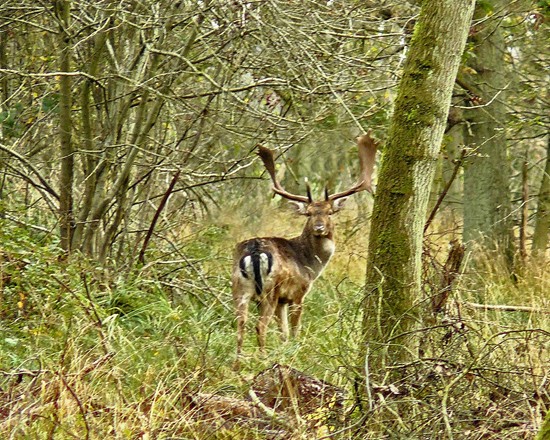
Photographed by Geoff Bell
Additional pictures by Peter Hallam
There are seven species of deer in
Britain and two of them are to be found in Bourne Wood yet few people have
ever seen one although their presence is often noticeable through hoof
prints in the mud or an occasional glimpse in an isolated forest glade.
They are shy and elusive creatures and you need to know the paths to tread
to find their secret places and to exercise extreme caution in pursuit of
a sighting because they are wary of man, with just cause.
The species which choose to live here are the fallow deer, probably
introduced to these islands by the Romans from Asia Minor, and the
muntjac, which has Chinese origins and has lived in the wild since
escaping from Woburn Park in Bedfordshire around 1890 and has now spread
to many other counties, including our own. All deer are reclusive animals
and during the day, they keep to isolated spots but those who regularly
walk the woods will see them occasionally and they are a delight to
encounter.
They also turn up in unexpected places in the countryside, sometimes even
in back gardens, and can occasionally be seen crossing roads, grazing in
fields and using the well trodden trails between their natural woodland
habitats, always a delight to encounter because deer are such quiet and
graceful creatures that they have earned a place in our affection, one
perpetuated through literature and films.
It is therefore surprising to find that they are often poached for their
meat and The Local described a particularly nasty incident in Bourne Wood
in which a fawn had been tied to a gate and mauled by dogs (14th March
2003). The newspaper reported that poachers dazzle the deer with powerful
lamps and then let their dogs loose to bring it down until it can be
killed, a barbarous practice that needs to be stamped out with the full
force of the law. The fawn in this case suffered a long and lingering
death and forestry officials believed that the carcass may have been left
behind as a warning to farmers and gamekeepers that the culprits can and
will be violent if disturbed.
Others dislike deer because they regard them as a traffic hazard and many
people would like to see them culled although this would not be popular.
It is reckoned that there are around 60 fallow deer living in Bourne Wood,
a relatively small number considering that the forest extends to some 400
acres. Half a dozen of them are white, not albino as many mistakenly
think, but the result of a recessive gene, a reminder that white deer were
far more frequent in centuries past. In addition there are around 100 muntjac
which are even less likely to be seen but their distinctive barking cry
can often be heard.
Deer usually live socially in groups or
herds and, like cattle, they are ruminants, that is they chew the cud.
They come out into the open at dawn and dusk to feed on leaves,
berries, grass, shoots, ferns, root crops and cereals. Some even eat bark,
so damaging the trees. During the day, they settle down in some quiet
place to regurgitate and digest their food. Leaves and other herbage are
needed in large quantities to satisfy their appetite and the process of
chewing the cud allows this shy animal to swallow a large amount of food
and then digest it at leisure.
The most outstanding feature of deer are the
antlers which are usually possessed by males only. They grow afresh each
year in time for the rutting season from the middle of October through the
middle of November when fights frequently take place for
the possession of the females. The males find their voices too at this
time and a loud roar is not uncommon in Bourne Wood. After rutting, the
antlers are shed.
The best time to spot these creatures is in the early morning or late
evening and the ponds at the far end of the woodland are a favourite haunt
where they often gather for their water, leaving hoof marks in the mud
along the banks.
OBSERVATIONS FROM READERS OF THE BOURNE FORUM
I lived near to Bourne Wood for much of my life and can remember seeing an
albino deer many years ago nibbling on fresh shoots in one of the fields
between there and Cawthorpe village. He was a big beastie with big
antlers. Most of my other encounters have been either meeting them on the
road when they seem to jump out from nowhere. One indeed did just that,
straight onto the bonnet of my first ever brand new company car. I stopped
but the deer must have been so startled that it ran off and I could not
find out whether it had been injured.
- Catherine Bergner, Thursday 29th April 2010.
I have seen many deer in the area and they have also trashed one of my
cars, my wife's car and many of my friends' cars.
There are far too many of these ever-breeding menace and they need to be
culled on a large scale. They are my experiences of theses daft creatures.
- John Glen, Friday 30th April 2010.
I walk my dogs most days in Bourne Wood and have seen many deer red,
fallow and a lot of white ones. Speaking to the forestry workers, they
tell me they do not cull the white ones hence so many more in the woods. I
am stunned every time I see these creatures and feel very lucky that we
have so many in this area.
- Jane Kingman-Pauley, Saturday 8th May 2010.
|
MORE PHOTOGRAPHS OF DEER
- taken in and around Bourne Wood in 2009-10 |
|
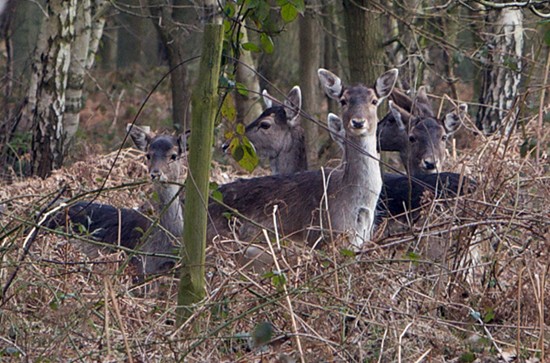 |
|
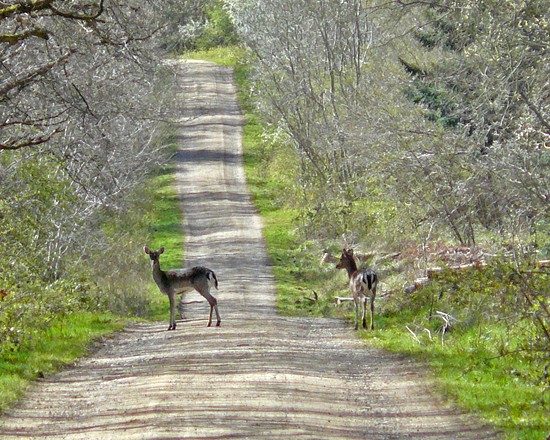 |
|
 |
|
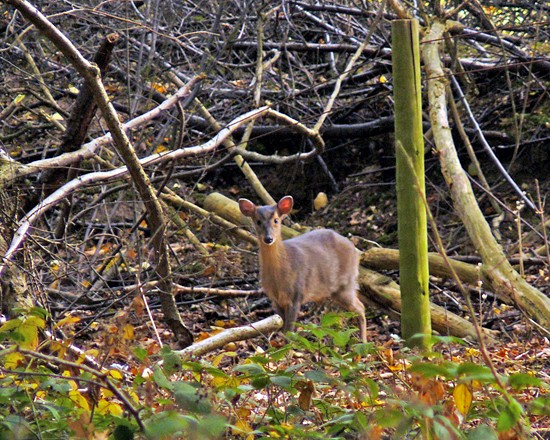 |
|
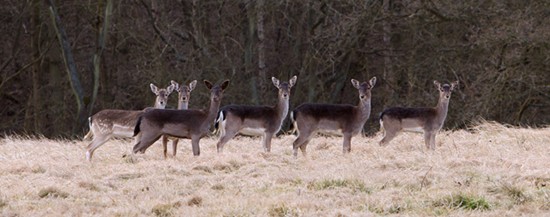 |
|
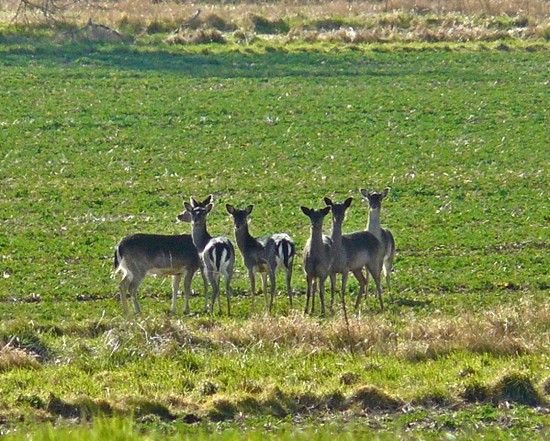 |
|
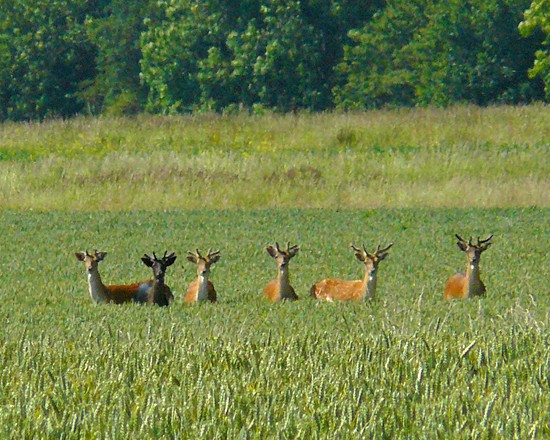 |
WRITTEN MAY 2010
Return to
Bourne Wood

Go to:
Main Index Villages
Index
|







